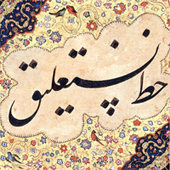
1707 The last great Mughal Emperor, Aurangzeb (r. 1658-1707) died in Ahmadnagar. Although he belonged to one of the most esteemed and impeccable imperial blood lineages of the world and was the ruler of the biggest empire of the age. He used to earn his salary by stitching caps and making copies of the holy Quran in his own calligraphy. He lived according to the lifestyle described in the Islamic faith and governed the empire mostly according to the Islamic way.

1722 Mahmoud Khan, an Afghan chieftain and a vassal of the Safavids, attacked Persia and captured Isfahan with virtually no resistance, thus ending the Safavid dynasty.

1724 Nizams of Hyderabad (1724–1948) founded by Nizam-ul-Mulk, Asaf Jah I.

1737: Darvish Abd al-Majid Taleqani the most important historical figure in Shikasta style was born in Taleqan, Iran. Afterwards, he went to Isfahan.

1739 Invading Nadir Shah (1729-1747) king of Iran massacred Delhi. He was a brilliant military strategist, defeating the Ottomans, Russians, Indians and various local tribes. During his invasion of Mughals, Nader Shah captured valuable trophy from India. After the conquest of his army, Mughal dynasty in India became too weak. After his death, his great military machine collapsed.

1751 Zand dynasty (1751-1794 CE), founded by Karim Khan Zand (1747-1779) who ruled over Isfahan and briefly had Shiraz as his capital. Karim Khan Zand gained control of central and southern parts of Iran. He was a compassionate ruler who refused to assume the title of Shah and referred to himself as the Representative of the People.

1794 Qajar dynasty (1794–1925 CE), founded by Agha Mohammad Khan (1794-1797). He gradually vanquished the Zands after Karim Khan Zand's death in 1779. The Qajars were originally a powerful Turkmen tribe from the Caspian's Eastern coast. The founder of the dynasty, Agha Muhammad, captured Tehran in 1786 and made it his capital. He was crowned Shah in 1796.

1796, Invention of lithography by Alois Senefelder (1771 – 1834).

1800, The first Fat Face Typeface was designed by Robert Thorne.

